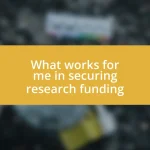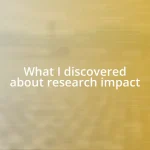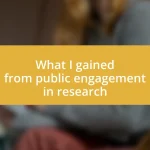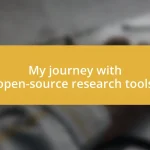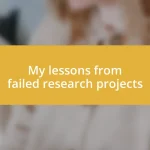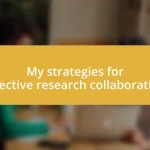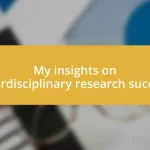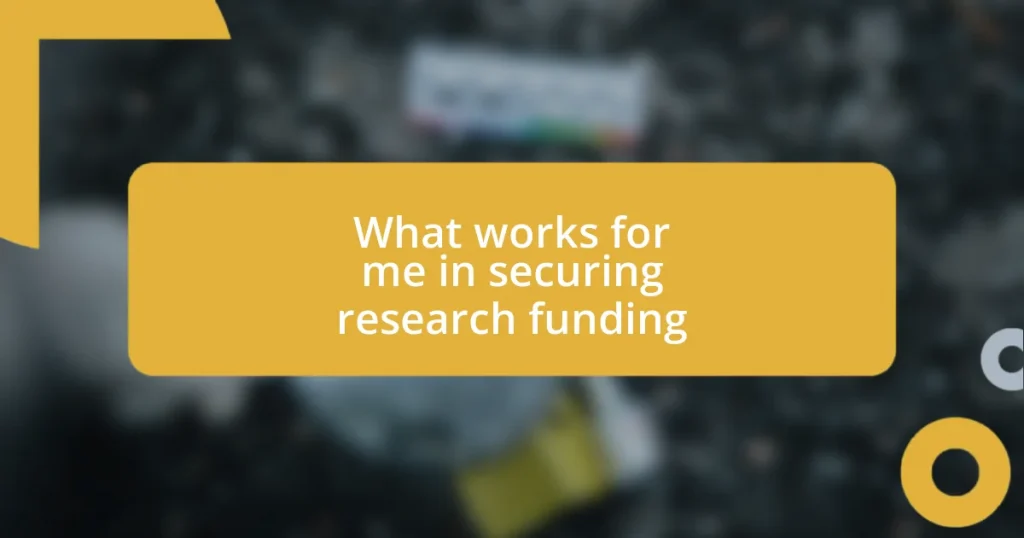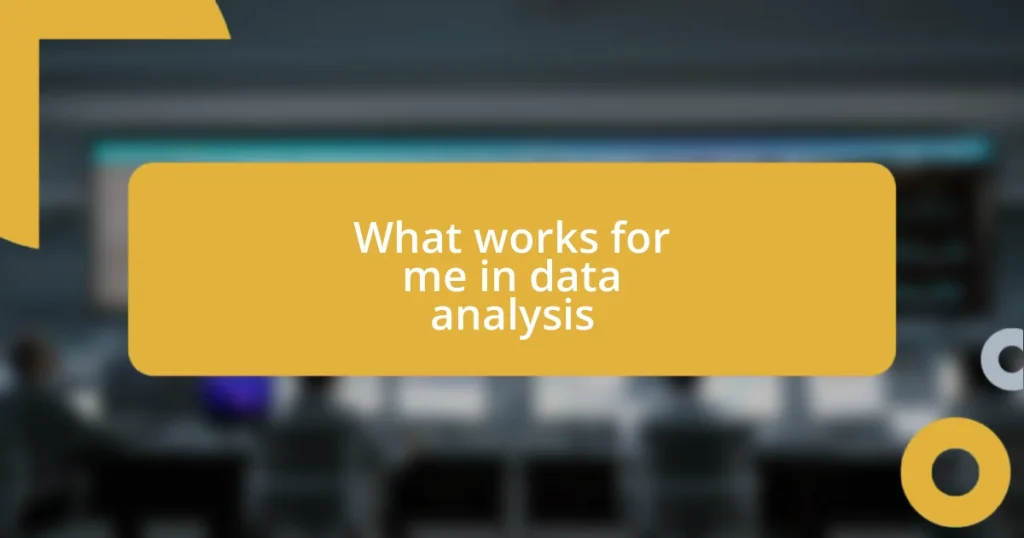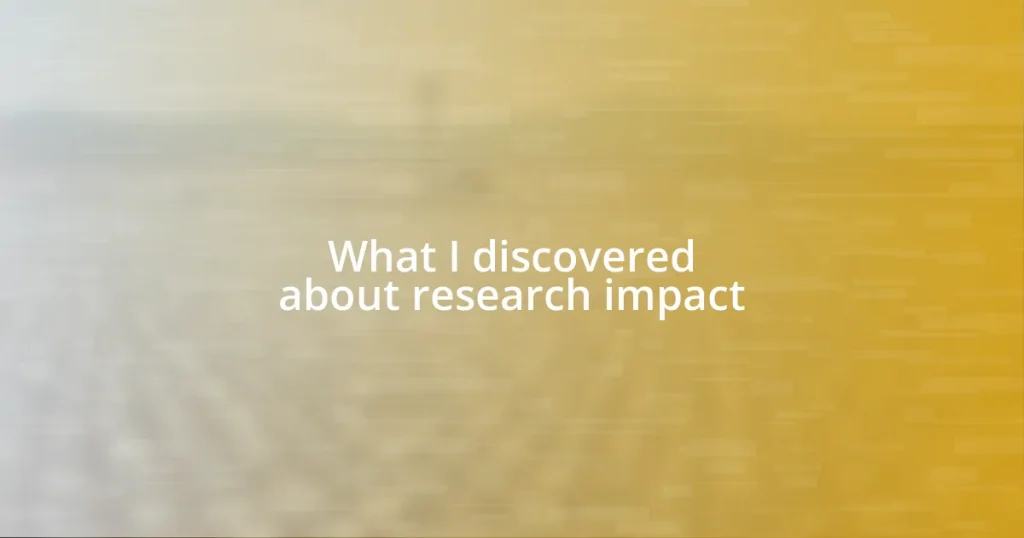Key takeaways:
- Building strong relationships and networking is crucial for securing research funding, as insights from peers can greatly enhance the proposal process.
- Crafting a compelling proposal involves clear objectives, significance, methodology, and incorporating personal storytelling to engage reviewers.
- Integrating feedback from colleagues and maintaining organized systems for post-award responsibilities can significantly improve research outcomes and funding success.

Understanding research funding landscape
Understanding the research funding landscape can often feel like navigating a dense forest. I remember the first time I dove into this world; I was overwhelmed by the multitude of sources—government grants, private foundations, and institutional funding. Each path seemed enticing but fraught with its own challenges.
One of the most striking lessons I learned is that research funding is not just about the money; it’s also about relationships. When I applied for a competitive grant, I reached out to peers who had previously secured funding. Their insights were invaluable; they openly described their experiences, the hurdles they faced, and the importance of building connections within the field. How often do we underestimate the power of networking in this process?
As I reflect on my journey, it’s clear that understanding the nuances of funding sources is crucial. For instance, knowing the specific interests and priorities of funding agencies can significantly improve one’s chances of success. Asking myself, “What makes my project align with their goals?” has led me to craft more compelling proposals. Each experience has shaped my perspective, revealing that a strategic approach is just as important as the research itself.
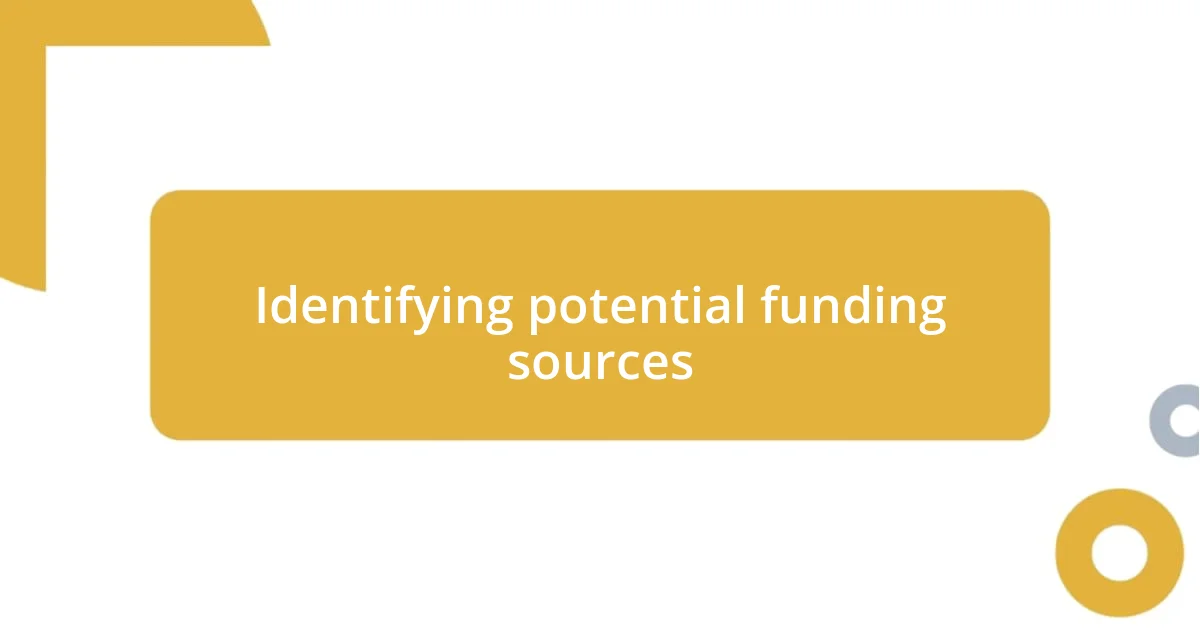
Identifying potential funding sources
Identifying potential funding sources can often feel like a treasure hunt, filled with unexpected finds and occasional dead ends. I once stumbled upon a lesser-known local foundation while browsing through a community newsletter. Their specific interest in environmental research aligned perfectly with my project, which made my proposal stand out. It’s these hidden gems that encourage me to dig deeper and explore beyond the conventional routes.
In my experience, leveraging online databases and funding directories has been an effective strategy for unveiling opportunities. One platform led me to discover an international grant that I would have otherwise overlooked. It requires a bit of patience and persistence, but keeping a well-organized list of potential sources has proven to be incredibly beneficial in tracking deadlines and requirements. Do you find that staying organized helps reduce the stress of securing funding?
Creating connections with organizations can also be a game-changer. I recall a networking event where I met representatives from a government agency that funded research similar to mine. Their insights about smaller, more targeted grants opened my eyes to alternatives I hadn’t considered. Sometimes, just a conversation can pivot your approach, revealing pathways to funding you hadn’t thought possible.
| Funding Source Type | Key Characteristics |
|---|---|
| Government Grants | Typically large sums, usually highly competitive with strict application guidelines. |
| Private Foundations | Often focus on specific areas of interest; may provide more flexibility but require alignment with their mission. |
| Corporate Sponsorships | May offer funding and resources; often seek mutual benefits and visibility in research outputs. |
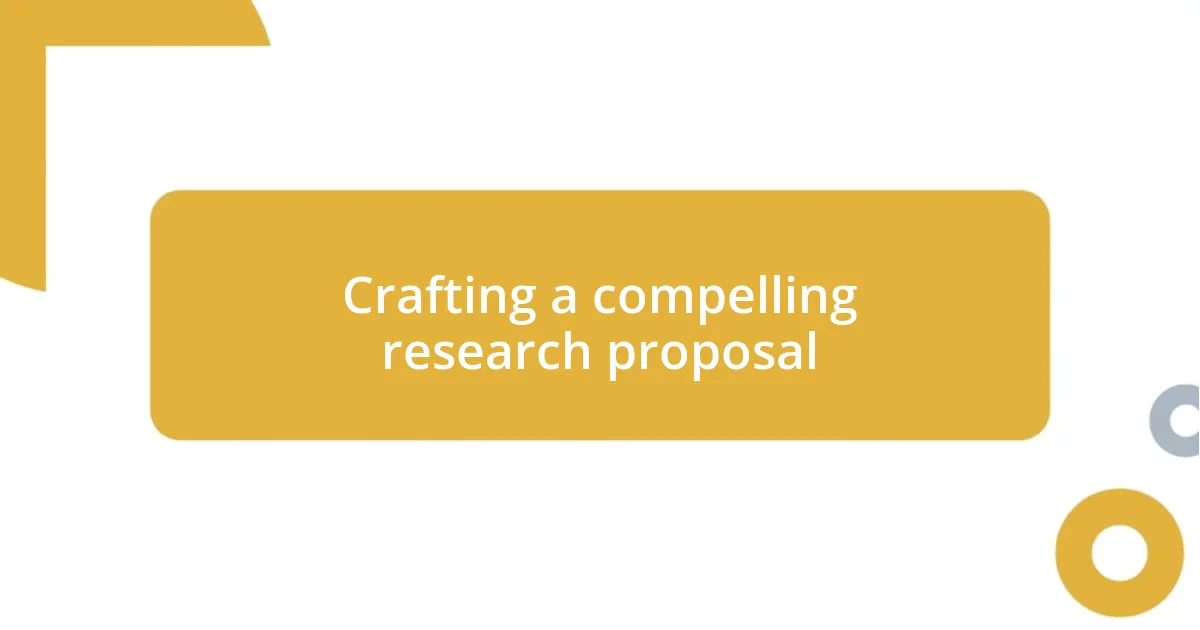
Crafting a compelling research proposal
Crafting a compelling research proposal is both an art and a science. I believe one of the most important steps is clearly articulating your research question. A compelling question not only sparks interest but also frames your entire proposal, guiding the reader’s understanding of its significance. I remember fine-tuning my own proposal after a mentor pointed out that my original question was too broad; narrowing it down not only clarified my objectives but also made it much more engaging.
To create a strong proposal, consider the following elements:
- Clear Objectives: Ensure your research goals are specific and achievable.
- Significance: Explain why your research matters—what gap does it fill?
- Methodology: Provide a detailed roadmap of how you’ll conduct your research.
- Budget Justification: Clearly outline how funds will be allocated, conveying prudence.
- Impact: Highlight potential applications of your findings in real-world scenarios.
- Engagement: Detail how you will involve stakeholders or the community in your research.
Moreover, I often emphasize the importance of storytelling in proposals. When I shared my motivations and personal connection to my research topic, reviewers responded more positively. They could see my passion and commitment, which enriched my proposal’s narrative. It’s not merely about what you’re studying; it’s about why it matters to you and to the world.
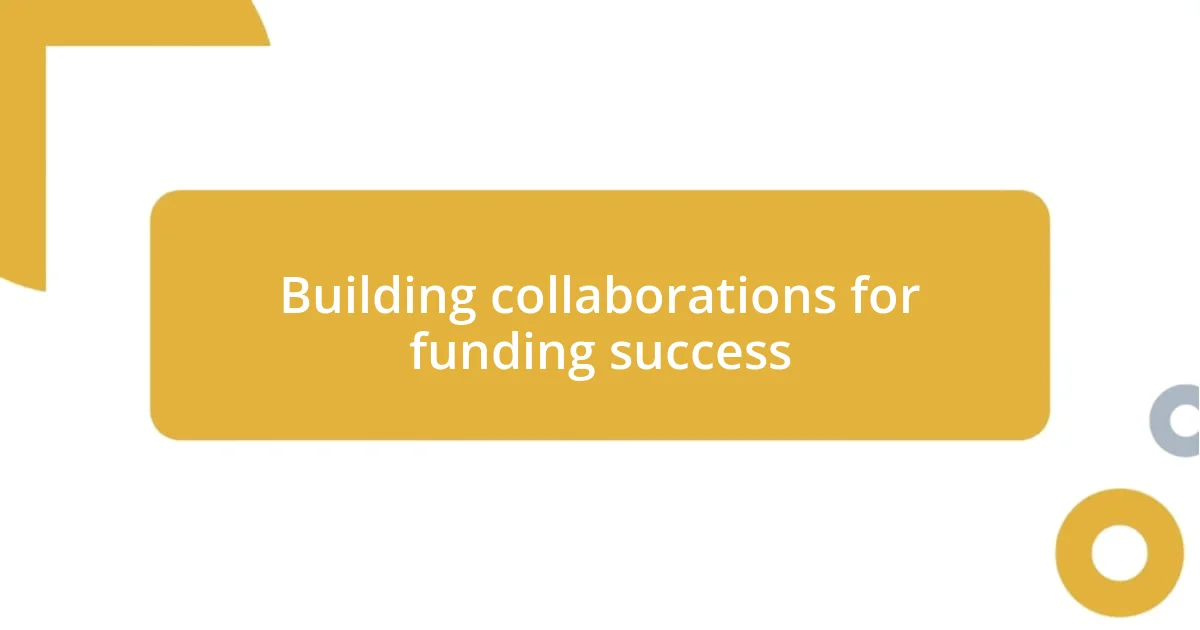
Building collaborations for funding success
Building collaborations for funding success is often a pivotal step in securing financial support for your research. I vividly remember attending a conference where, after presenting my work, I was approached by a researcher from a different institution. We discovered that our projects had complementary aspects, and this initial conversation led to a partnership that not only strengthened our proposals but ultimately resulted in a successful grant application. Have you ever considered how collaborating with others might enhance your funding opportunities?
Engaging with diverse teams brings varying perspectives that can refine and elevate your research idea. For instance, when I worked with a group that included both scientists and social scientists, we were able to present a multidimensional proposal that appealed to a broader array of funding bodies. It dawned on me that the insights from this collaboration didn’t just improve our proposal’s depth; they also highlighted the real-world relevance of our combined research, which is often a critical factor for funding agencies.
Forming collaborations also opens up invaluable networks. I’ve found that sharing contacts and resources with collaborators creates a snowball effect—every new partnership can lead to even more opportunities. At one point, my colleague introduced me to a university partnership that not only provided funding but also access to innovative resources. How has collaboration shown up in your journey, and what unique opportunities have come your way from working together with others?
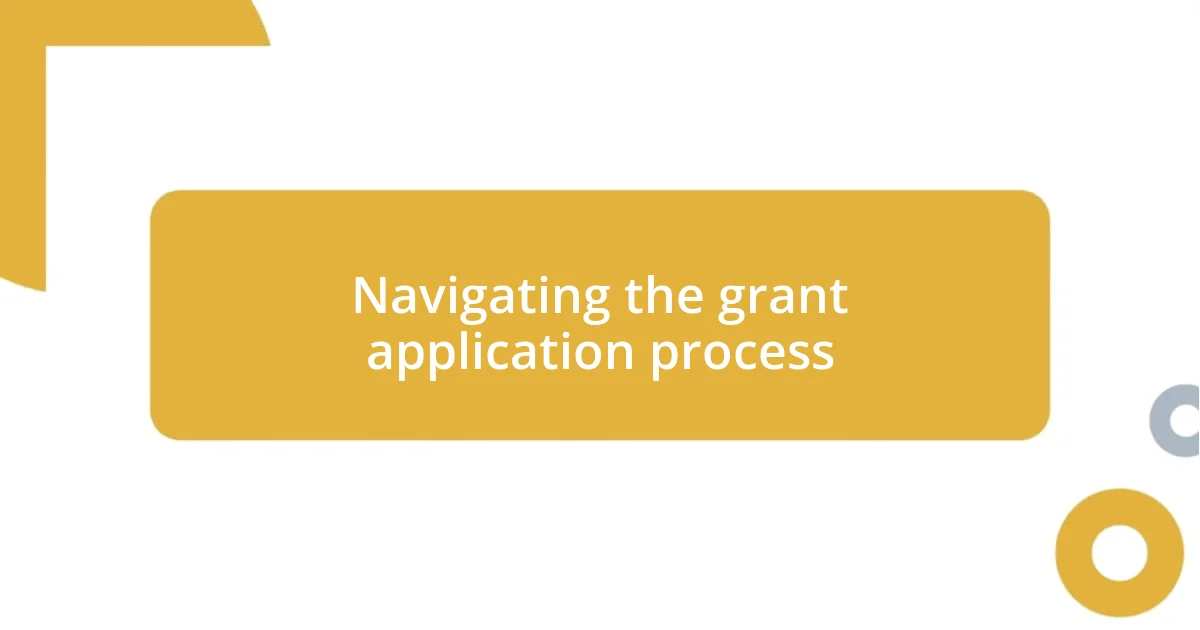
Navigating the grant application process
Navigating the grant application process can feel overwhelming, yet it’s a journey I’ve come to embrace with each new opportunity. For me, breaking down the application into manageable steps has made all the difference. When I first started applying for grants, I created a checklist that detailed every component, from the project summary to the appendices. It felt like I was mapping out my research adventure, guiding my way through the intricate pathways of funding requirements.
One aspect of the grant application that I’ve learned to prioritize is understanding the specific requirements of each funding body. It’s astonishing how many times I’ve seen researchers overlook details, such as formatting guidelines or word limits. Early on, I made that mistake myself. After submitting a grant that didn’t adhere to the guidelines, I received valuable feedback that led me to realize the importance of aligning my proposal with the funder’s mission. Have you ever experienced that moment when you realize the little details can make a big impact?
Additionally, I find that seeking feedback from colleagues or mentors before the final submission is invaluable. When I shared my draft with trusted peers, their insights transformed my application. They highlighted areas that needed more clarity and pointed out assumptions I hadn’t realized I was making. Their fresh perspectives not only strengthened my proposal but also reminded me that collaboration doesn’t stop at the partnership stage; it’s equally important to cultivate a support system during the grant writing process. What about you? Have you found that a second pair of eyes can elevate your work?
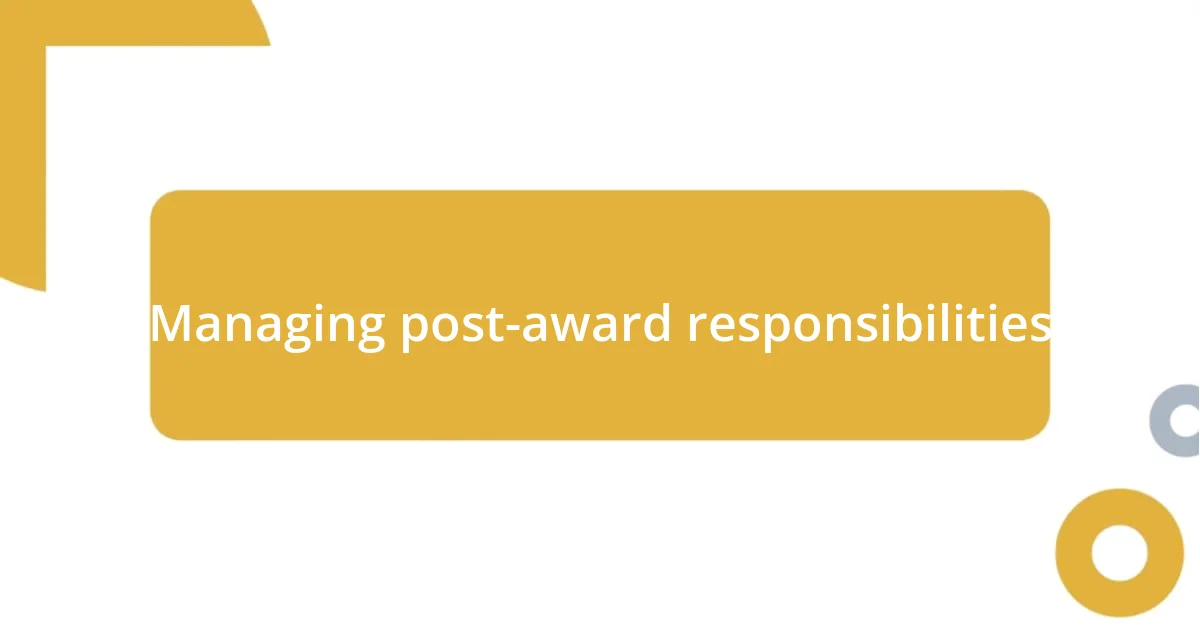
Managing post-award responsibilities
Managing post-award responsibilities is a crucial phase that often feels daunting but can really shape the success of your research project. After I received my first major grant, I was overwhelmed by the myriad of tasks I had to juggle—from budget management to reporting requirements. It was imperative to keep meticulous records and timelines, as I learned the hard way that not adhering to the funding agency’s rules can lead to serious consequences. Have you ever found yourself lost in a sea of paperwork, wishing you had a clearer map to navigate through?
One strategy I’ve found particularly effective is setting up a dedicated system for tracking progress and expenses. I remember creating a simple spreadsheet that not only allowed me to monitor expenditures but also to document milestones and outcomes. This organizational tool became invaluable during progress report submissions, as it saved me countless hours of frantic searching. How often do you think about the importance of organization in enhancing your efficiency?
Communication also plays a pivotal role in managing post-award responsibilities. Initially, I was hesitant to reach out to the funding agency with questions, fearing I might appear uninformed. However, a mentor advised me that these agencies often appreciate transparency and proactive communication. After I reached out for clarification on certain requirements, not only did I gain valuable insights, but I also built a rapport that proved beneficial later on. Have you experienced a moment when asking for help turned into an unexpected opportunity?
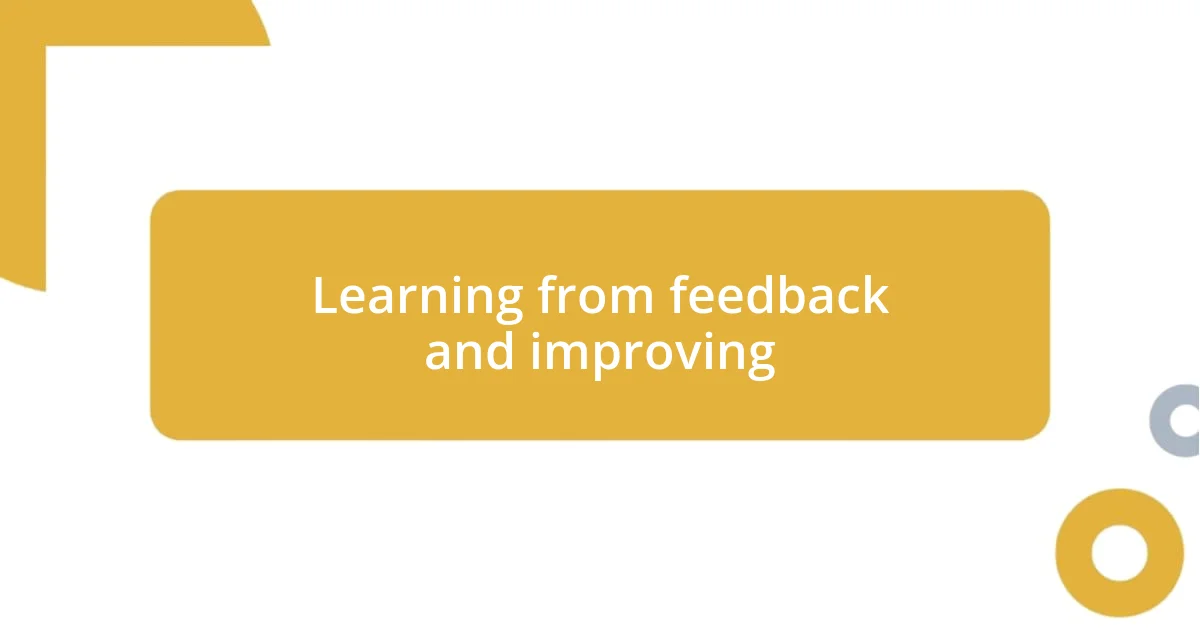
Learning from feedback and improving
Learning from feedback has been a transformative aspect of my research journey. I vividly recall a time when I submitted a proposal that seemed strong to me, only to receive a barrage of constructive critiques from reviewers. Initially, it stung a bit, but over time I began to appreciate how those insights highlighted areas I had overlooked. Truly, feedback acts as a mirror, revealing not just the flaws in our proposals but also the pathways for growth. Have you ever felt that initial discomfort transform into motivation for improvement?
I’ve discovered that integrating feedback requires an open mindset. After one particularly challenging round of revisions, I made a point to create a ‘feedback log’ where I documented every suggestion and critique. This simple practice has transformed my approach. It feels empowering to revisit that log and see how each piece of feedback has shaped my work. I find it interesting to consider: what if we approached feedback as an essential ingredient rather than a nuisance in our research process?
Moreover, I also enjoy convening a ‘feedback roundtable’ with colleagues, which has become one of my favorite rituals. We gather, share our drafts, and provide one another with thoughtful critiques. This collaborative setting fosters not only constructive criticism but also camaraderie and support among peers. In those moments, I truly understand that every snippet of feedback is like a stepping stone, each one nudging us closer to our goals. Have you ever thought about how collaboration can elevate not just your research, but also your personal growth as a scholar?
